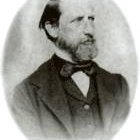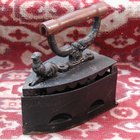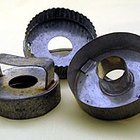
Before the electric toaster arrived, making toast required a trial-and-error process. You had to toast one side of the bread and flip it to toast the opposite side. If you left either side of the toast toward the oven's heat source a minute too long, you had burnt toast. In the early twentieth century, though, an American inventor solved the burnt toast problem with the creation of the pop-up electric toaster.
Invention
Charles Strite invented the first automatic pop-up toaster on May 29, 1919. Strite was a master mechanic at a plant in Stillwater, Minnesota. He took interest in the idea of a toast machine because the company cafeteria always sold burnt toast. He applied for a patent for his device, and it was approved on October 18, 1921. Strite started the Waters Genter Company in 1921 to begin marketing his toaster. Strite envisioned selling it to the restaurant industry, and oversaw the production of the first 100 toasters, which were assembled by hand and shipped to the Childs restaurant chain.
Progress
The pop-toaster owes much to its predecessors. In 1909, General Electric introduced the first electric toaster for home use. Frank Shailor invented it, submitting a patent for the D-12 toaster in July 1909. Copeman Electric Stove Company introduced a toaster with an automatic bread turner in 1913. Even Strite's model needed some work. In 1926, Waters Genter Co. redesigned Strite's invention and introduced the world's first electric toaster to the public under the name "Toastmaster." The brand name still exists today.
Function
Strite's toaster worked by using a heating element to warm toast, which was lowered into the toaster in a small basket and then released via a spring set on a timer. The heating element shut off when the toast was ready. Also vital to its success, the pop-up toaster featured heating elements on both sides. This provided for even cooking.
Features
Strite's invention was based on Nichrome filament wire, which was invented in 1905 by Albert Marsh. The wire helped warm the toast, which needed to be heated to 310 degrees F in order to brown. The toaster's exterior kept the hot wire from contact with other objects, which reduced the chance that it would start a fire.
Considerations
While Strite's product was immediately praised, anyone who used it had to slice the bread by hand. Plus, the price was still fairly high, and it was primarily bought as a wedding gift when it debuted. It wasn't until 1930 that Wonder Bread made pre-sliced bread mainstream. Other bread companies followed suit. Suddenly, demand for toasters soared and prices fell. By the end of 1930, consumers had purchased more than 1.2 million toasters. The product was quickly becoming a standard kitchen appliance. By the 1960s, most middle class families owned a pop-up toaster.
Change
In 1949, Sunbeam introduced the T-20 toaster in the United States. The model was discontinued in 1996. In the 1960s, toaster manufacturers widened the slots on pop-up toasters to allow for toasting bagels and wider slices of bread. Engineers also added heat-resistant plastic shells and microchip controls.
Benefits
The pop-up toaster was praised for its ability to toast bread without burning it. The toaster also allowed cooks to focus on other tasks in the kitchen. Over time, the automatic pop-up toaster has seen a number of improvements, including models that include a removable crumb tray and designs that allow for four or more slices of bread to be inserted at one time.
Related Articles

The History of Nestle Chocolate

The History of Geneve Watches

Difference Between Swiss & Japanese ...

Is Revere Ware Aluminum?

When Was the First Hair Clipper ...

How Do Citizen Eco-Drive Watches Work?

Processed Food Definition

About Colonial Desserts

How to Make Egyptian Bread the Egyptian ...

The History of Bread Pudding

The History of Coal Iron Presses

The History of Communication Technology

How to Grill With a Pizza Stone and ...

The History of the Biscuit Cutter

Is Corning Cookware Safe?

How Does a Bread Maker Work?

How to Make Communion Bread Wafers

The History of Child Care Programs

How to Bake Bread in Stoneware

Does Heat Kill Lactobacillus Bacteria ...
References
Writer Bio
Based in Central Florida, Ron White has worked as professional journalist since 2001. He specializes in sports and business. White started his career as a sportswriter and later worked as associate editor for Maintenance Sales News and as the assistant editor for "The Observer," a daily newspaper based in New Smyrna Beach, Fla. White has written more than 2,000 news and sports stories for newspapers and websites. He holds a Bachelor of Arts degree in journalism from Eastern Illinois University.
Photo Credits
Donovan Govan: Creative Commons